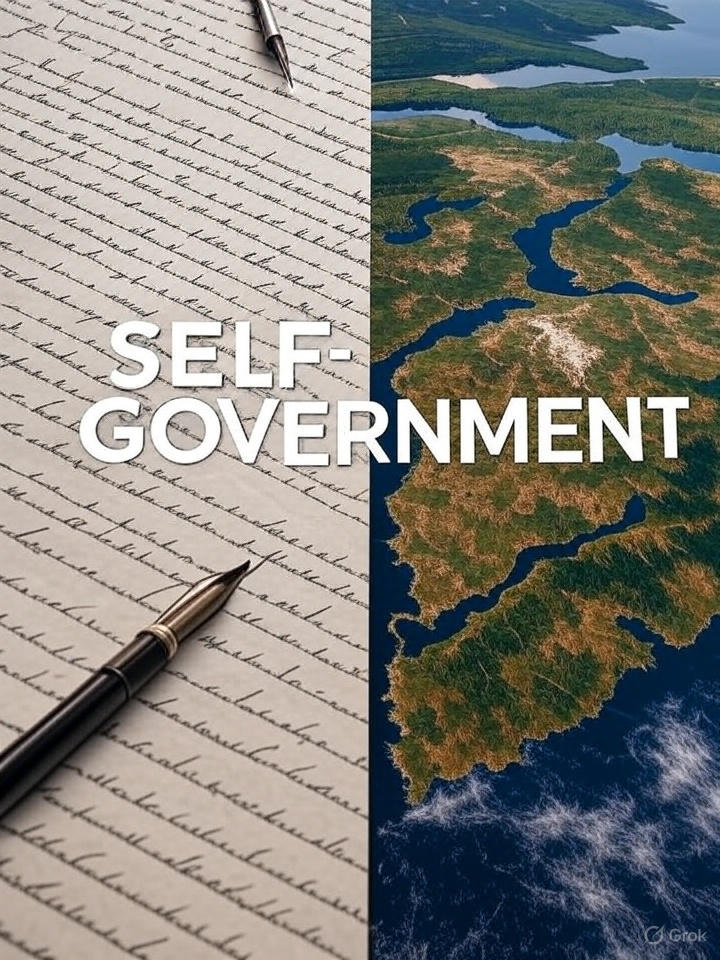When the term “Indigenous self-government” appears in the news, it can evoke a range of reactions, from confusion to strong opinions. For some, it represents a step towards reconciliation and the recognition of inherent rights. For others, it raises questions about sovereignty and the future of Canada.
But what does “self-government” actually mean for First Nations, Inuit, and Métis peoples in Canada? And why is it so crucial to understanding the relationship between Indigenous peoples and the Canadian state? This is the full story, a foundational guide to a complex and evolving reality.
The Historical Context: From Treaties to Today
The concept of Indigenous self-government is deeply rooted in the history of this land. Before the arrival of European settlers, Indigenous nations had their own sophisticated systems of governance, laws, and ways of life. The relationship between the Crown and Indigenous peoples began with treaties—agreements that, while often interpreted differently by each side, recognized Indigenous sovereignty and land rights.
Over time, however, government policies shifted towards assimilation and the erosion of Indigenous governance structures. The reserve system, the Indian Act, and residential schools were all tools in this process.
The Shift Towards Recognition: Inherent Rights and Modern Treaties
The latter half of the 20th century saw a growing movement for Indigenous rights and self-determination. Key legal decisions, most notably the Calder case in 1973, began to affirm the existence of Aboriginal title and rights.
Section 35 of the Constitution Act, 1982 further recognized and affirmed the existing Aboriginal and treaty rights of Indigenous peoples in Canada. This constitutional recognition laid the groundwork for a new era of negotiations focused on modern treaties and self-government agreements.
Unlike the historic treaties, which often involved land surrender in exchange for reserves and other benefits, modern treaties are comprehensive agreements that address a wide range of issues, including land ownership, resource management, governance, and cultural preservation.
What Does Self-Government Look Like in Practice?
There is no single model for Indigenous self-government in Canada. It is diverse and tailored to the unique histories, cultures, and aspirations of each Indigenous nation. However, some common elements include:
- Control over Governance Structures: Indigenous governments have the authority to create their own constitutions, laws, and administrative systems.
- Land and Resource Management: Many self-government agreements include provisions for Indigenous control over their traditional territories and resources.
- Service Delivery: Indigenous governments often take on responsibility for delivering essential services to their citizens, such as education, healthcare, and social services, in a way that is culturally appropriate.
- Fiscal Arrangements: Self-government agreements typically include financial arrangements that provide Indigenous governments with the resources they need to exercise their authority.
A prime example of modern self-government in action is the Nisga’a Final Agreement. As the first modern treaty in British Columbia, it provides the Nisga’a Nation with self-governance authority over their lands and citizens in the Nass Valley, including the power to make laws in a number of areas.
Self-Government: A Path Forward for Canada
Indigenous self-government is not about separation or diminishing Canada. Instead, it is about building a stronger, more inclusive, and more just Canada based on the recognition of inherent rights and the principle of nation-to-nation relationships. When Indigenous nations have the autonomy to govern themselves and make decisions for their own futures, it leads to greater self-determination, improved well-being for Indigenous communities, and a more respectful and equitable relationship with the rest of Canada.

